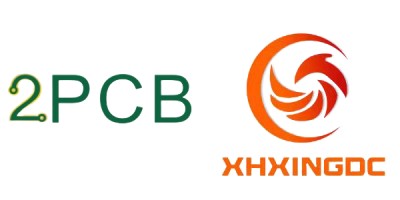A big boss in the PCB design industry said: A qualified PCB design engineer must not only have rich circuit design experience, but also have knowledge and experience in production and manufacturing. Design that is divorced from actual production is nothing more than talking on paper. Today, we might as well learn some important knowledge about PCB manufacturing.
1. PCB manufacturing process
There are many processes in PCB processing and manufacturing. Whether it is circuit processing, solder mask ink processing, or silk screen processing, they are all similar to the “printing” method. This is why PCB is called “printed circuit board” or “printed circuit board”.
(1) Opening materials
According to the requirements of the engineering data MI, the large sheets that meet the requirements are cut into small pieces to produce panels. Small sheets that meet customer requirements.
Process: large sheet → cutting according to MI requirements → curium board → filleting\edge grinding → plate output
(2) Drilling
Purpose: According to the engineering data, drill the required hole diameter at the corresponding position on the sheet metal that meets the required size.
Process: Stacking pins → Upper plate → Drilling → Lower plate → Inspection\repair
(3) Immersed copper
Purpose: Copper deposition is to deposit a thin layer of copper on the wall of the insulating hole using chemical methods.
Process: Rough grinding → Hanging plate → Copper immersing automatic line → Lower plate → Dip % dilute H2SO4 → Thickening copper
(4) Graphic plating
Purpose: Graphic plating is to electroplat a layer of copper with a required thickness and a gold, nickel or tin layer with a required thickness on the exposed copper of the circuit pattern or on the hole wall.
Process: Placing the board → Degreasing → Washing twice → Micro-etching → Washing → Pickling → Copper plating → Washing → Pickling → Tin plating → Washing → Lowering the board
(5) Etching
Purpose: Etching is to use chemical reaction to corrode the copper layer in non-circuit parts.
(6) Green oil
Purpose: Green oil is to transfer the pattern of green oil film to the board, which plays the role of protecting the circuit and preventing tin from the circuit when welding parts.
Process: Grind the plate → Print photosensitive green oil → Curium plate → Expose → Develop; Grind the plate → Print the first side → Bake the plate → Print the second side → Bake the plate
(7) Silk screen characters
The required text, trademark or part symbol is printed on the board by screen printing, and then exposed on the board by ultraviolet irradiation.
(8) Cleaning
During the manufacturing and assembly and welding process of printed circuit boards, due to the presence of various pollution factors, printed wires and component leads are corroded, resulting in short circuits, etc., seriously affecting the reliability of printed circuits. Therefore, various printed circuits and printed circuit assemblies (PCAs) must be strictly cleaned to remove flux residue, anti-oxidation oil, solder contaminants and other various pollutants, especially flux residue. Generally speaking, the cleanliness of printed circuit boards after cleaning should meet MIL-P-28809 standards.
(9) Inspection
After completing the machining process, the PCB is inspected for quality. The main inspection items include: visual inspection, connectivity test, insulation resistance test, solderability test, etc.
2. Commonly used PCB boards
(1)FR-4
The code name of a flame-resistant material grade, which means that the resin material must be able to self-extinguish after burning. It is not a material name, but a material grade. Therefore, the FR currently used in general circuit boards There are many types of -4 grade materials, but most of them are composite materials made of so-called Tera-Function epoxy resin plus filler and glass fiber.
(2) Resin
A heat-curing material that can undergo polymer polymerization. Epoxy resin is commonly used in the PCB industry. Features:
a. With electrical insulation
b. Can be used as an adhesive between copper foil and reinforcement (glass fiber cloth)
c. Electrical resistance, heat resistance, chemical resistance, water resistance
(3) Glass fiber cloth
An inorganic material is fused at high temperature and then cooled into an amorphous hard material, which is then interwoven with warp and weft yarns to form a reinforcing material.
Commonly used E-glass fiber cloth specifications are: 106, 1080, 3313, 2116, 7628.
(4) Aluminum substrate
Its base material is of course aluminum, which is composed of copper skin, insulation layer and aluminum sheet. It is now commonly used in the LED lighting industry because of its good heat dissipation performance.
3. PCB back drilling
Back drilling is actually a special type of deep hole drilling. In the production of multi-layer boards, such as the production of 12-layer boards, we need to connect the 1st layer to the 9th layer. Usually we drill through holes (drilling at one time) , and then sink the copper. In this way, the 1st floor is directly connected to the 12th floor. In fact, we only need to connect the 1st floor to the 9th floor. The 10th to 12th floors are like a pillar because there are no lines connected.
This pillar affects the signal path and can cause signal integrity problems in communication signals. Therefore, this extra pillar (called STUB in the industry) is drilled out from the reverse side (secondary drilling), so it is called back drilling.
The function of back drilling is to drill out the through-hole sections that do not play any connection or transmission role to avoid reflection, scattering, delay, etc. of high-speed signal transmission, which will bring “distortion” to the signal. Research shows that: affecting the signal integrity of the signal system In addition to the main factors such as design, board materials, transmission lines, connectors, chip packaging and other factors, via holes have a greater impact on signal integrity.
Reminder: During the PCB design stage, engineers need to effectively consider the process requirements for manufacturability to improve production yield and reduce losses during the production process.

